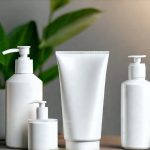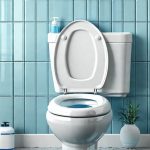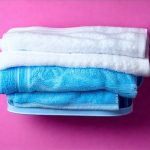Pelvic-Gentle Cleaning Habits After the Toilet
Personal hygiene is deeply intertwined with overall well-being, yet conversations around specific aspects – particularly those relating to intimate areas – often remain hushed. Many people instinctively adopt cleaning habits after using the toilet without fully considering their impact on delicate pelvic health. What we perceive as ‘clean’ doesn’t always equate to healthy when it comes to this region. Traditional methods, like aggressive wiping or reliance solely on harsh soaps, can disrupt the natural microbiome, leading to irritation, imbalance, and potentially long-term issues. This article aims to explore gentle, effective cleaning practices that prioritize pelvic floor health and comfort, moving beyond common misconceptions and fostering a more informed approach to personal care.
The pelvic region is home to complex systems – including the bowel, bladder, reproductive organs (for those who have them), and the pelvic floor muscles which support all of these structures. These systems are incredibly sensitive and rely on a balanced ecosystem for optimal function. Disrupting this balance through overly zealous cleaning can lead to inflammation, dryness, increased susceptibility to infections, and even contribute to pelvic pain or urinary issues. Understanding that less is often more—and choosing methods that respect the natural anatomy and physiology of the area—is crucial for maintaining long-term health and comfort. This isn’t about neglecting hygiene; it’s about refining our practices to be both effective and gentle.
The Importance of Gentle Cleaning & Avoiding Harsh Products
Many conventional cleaning products contain ingredients that can strip away natural oils, disrupt pH balance, and irritate sensitive skin. Fragrances, dyes, sulfates (like sodium lauryl sulfate), and alcohol are particularly problematic. These chemicals don’t necessarily make you cleaner; they simply remove the protective barrier of your skin, making it more vulnerable to bacteria and inflammation. This can create a vicious cycle where irritation leads to more frequent or aggressive cleaning, further exacerbating the problem. Prioritizing pH-balanced cleansers specifically designed for intimate use is paramount. These are formulated to respect the natural acidity of the vaginal area (if applicable), which helps prevent harmful bacterial overgrowth. If you’re experiencing persistent issues, it may be helpful to understand what causes a mass in the kidney and seek professional guidance.
Beyond product choice, the method of cleaning itself plays a significant role. Aggressive wiping, especially with dry toilet paper, can cause micro-tears in the delicate skin and disrupt the microbiome. This is even more pronounced for individuals prone to sensitivities or conditions like hemorrhoids. The goal isn’t to scrub away all traces of natural bodily functions; it’s to gently remove waste while preserving the integrity of the surrounding tissues. Consider that the pelvic region is not inherently ‘dirty’ – it’s a part of the body that naturally produces fluids and secretions, which are often beneficial for maintaining health.
A key concept is understanding bidirectional hygiene. This means cleaning from front to back (for those with vulvas), preventing bacteria from the rectal area from contaminating the urethra. It’s a small step that can significantly reduce the risk of urinary tract infections (UTIs). To further support bladder health, consider building bladder-friendly habits at the grocery store.
Optimizing Toilet Paper Use & Alternatives
Toilet paper remains the most common method for post-toilet cleaning, but even its use can be refined. Opting for unscented, hypoallergenic toilet paper that’s soft and absorbent is a good starting point. Avoid anything with added lotions or fragrances. Furthermore, using less toilet paper – just enough to gently cleanse – minimizes friction and potential irritation. Consider the “patting” method instead of vigorous wiping; this involves lightly dabbing the area clean rather than scrubbing.
However, relying solely on dry toilet paper isn’t always sufficient for thorough cleaning, nor is it ideal for pelvic health. This is where alternatives come into play:
- Bidet attachments: These affordable devices attach to your existing toilet and provide a gentle stream of water for cleansing. They are highly effective at removing waste and can significantly reduce the need for toilet paper.
- Washable cloths (bidet-like cleaning): Using soft, washable cloths moistened with warm water offers a similar experience to a bidet. Ensure these cloths are cleaned thoroughly after each use.
- Peri bottles: These squeeze bottles provide a controlled stream of water and are often recommended postpartum for gentle cleansing around the perineum.
These alternatives not only offer superior cleanliness but also reduce friction, minimize irritation, and promote better pelvic health. Switching to one of these methods can be particularly beneficial for individuals with sensitive skin or chronic pelvic pain. In cases of persistent discomfort, understanding what causes hardness in the testicle might be a concern, and consulting a healthcare professional is essential.
The Role of Water Temperature & Gentle Drying
Water temperature is an often-overlooked aspect of pelvic hygiene. Extremely hot water can strip away natural oils and cause dryness, while cold water may not be as effective at cleansing. Lukewarm water is generally the most comfortable and gentle option. When using a bidet or peri bottle, ensure the water temperature is comfortably warm to avoid shocking the sensitive tissues.
After cleaning with water, gently drying the area is equally important. Avoid harsh rubbing; instead, pat dry with a soft towel – preferably one that’s dedicated for this purpose. Again, unscented and hypoallergenic towels are best. Leaving the area slightly damp can also be beneficial, as it allows the natural moisture barrier to recover. However, if you have any concerns about fungal growth or odor, ensure the area is thoroughly dried.
Consider using a separate towel for drying the perineal region than one used for other parts of the body, further minimizing potential cross-contamination and ensuring optimal hygiene. This simple act can contribute significantly to overall comfort and health.
Understanding Pelvic Floor Muscle Engagement & Hygiene
The pelvic floor muscles play a vital role in supporting bladder and bowel function, as well as sexual health. Cleaning habits can indirectly impact these muscles. Aggressive wiping or straining during bowel movements (often exacerbated by constipation) can place undue stress on the pelvic floor, potentially weakening them over time. This can lead to issues like urinary incontinence or pelvic organ prolapse.
Gentle cleaning practices, combined with regular pelvic floor muscle exercises (Kegels), are essential for maintaining a strong and healthy pelvic floor. Incorporating mindful breathing while toileting – relaxing the pelvic floor muscles during bowel movements and engaging them gently afterward – can also help improve function. If you’re unsure about how to perform Kegel exercises correctly, consult with a physical therapist specializing in pelvic health. For those experiencing issues like urinary incontinence after prostate surgery, targeted exercises are particularly helpful.
Furthermore, chronic constipation is a major contributor to pelvic floor dysfunction. Staying adequately hydrated, consuming a fiber-rich diet, and avoiding prolonged straining are crucial for preventing this issue. By addressing bowel habits alongside gentle cleaning practices, you can create a holistic approach to pelvic health that promotes long-term well-being.
This information is intended for general knowledge and informational purposes only, and does not constitute medical advice. It is essential to consult with a qualified healthcare professional for any health concerns or before making any decisions related to your health or treatment.





















